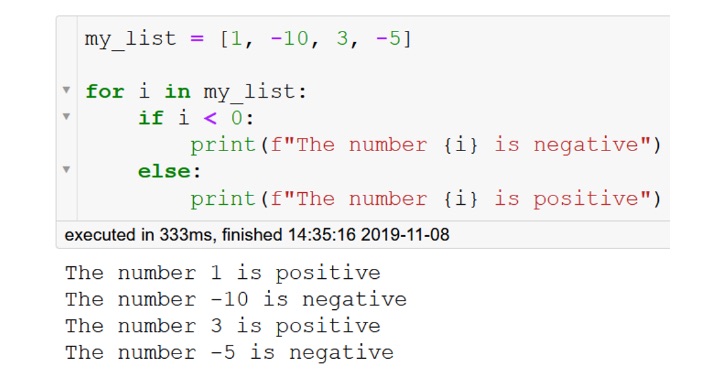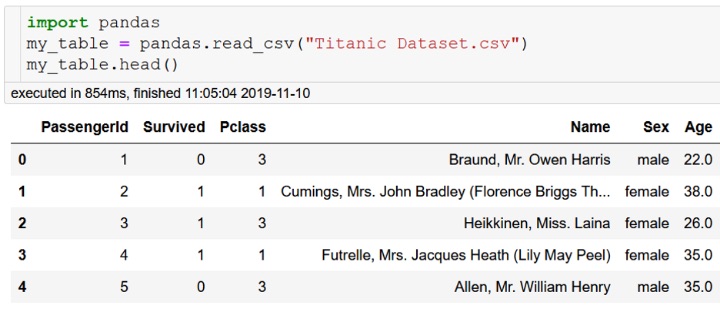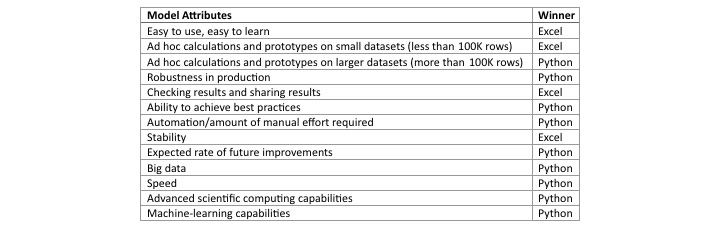The Rise of Python: Powerful, Robust Calculation Software
By Donal McGinley
Health Watch, August 2021

This article was originally published as a Milliman Briefing Note. Statements of fact and opinions expressed herein are those of the individual authors and are not necessarily those of the Society of Actuaries, the editors, or the respective authors’ employers.
Python has become the fastest-growing major programming language in the world.[1] It has surged in popularity over the last decade, following the development of its industry-leading capabilities in data science, machine learning and artificial intelligence, and it is now one of the most globally popular and widely used languages. In this article, I discuss some of the reasons for its popularity.
Many actuaries and insurers have started using Python for many reasons, including:
- It has a vast array of powerful functionality, which is available for free to anyone who wants to use it.
- It has very strong data science capabilities, as it is excellent at manipulating data, such as importing, exploring, checking, modeling, visualizing and summarizing data.
- It has strong modeling capabilities and can be used to build actuarial models such as discounted cash flow models and pricing models, or to build less traditional models such as machine-learning or artificial intelligence models.
- It is good for model industrialization and can be used to build full end-to-end processes, such as regular valuation processes and ORSAs.
- It is a general-purpose programming language that was designed to be robust enough to be used in production. It is a high-level language (similar to VBA), which was designed to be easier to use and easier to learn than other programming languages.
This article gives an overview of Python and explains why it has grown so rapidly in recent years, with a particular focus on the capabilities relevant for actuaries and insurers.
Use Cases
Actuaries are increasingly using Python for many different types of work, including:
- Discounted cash flow modeling (IFRS and Solvency II)
- End-to-end valuation processes
- ORSAs
- SCR aggregation and risk margin calculation
- Reinsurance calculations
- Policyholder asset look-through
- Lapse and mortality investigations
- Analyzing past policyholder performance
- Data checks
- Output checks
- Machine learning
One of the main benefits of using Python is that it is powerful and robust enough to carry out all of these tasks. In the past we have relied on many different software tools such as Excel, VBA, Access, SQL and other proprietary software. Now it is possible to perform these types of calculations in one single tool (Python). Python is an excellent tool for performing everyday actuarial work. Also, it contains exciting functionality that isn’t typically found in conventional actuarial software, such as machine-learning capabilities. Going forward, I expect that actuaries will replace models and processes built in Excel or SQL with Python models and processes, as Python[2] is a powerful tool with strong calculation and data processing capabilities.
History of Python
Python was created in 1990 by Guido Van Rossum, a Dutch programmer, who named it after his favorite comedy troupe, Monty Python’s Flying Circus. He had observed that computers were becoming faster and cheaper over time, whereas programmers were generally becoming more expensive due to salary inflation.[3] He expected these trends to continue over time. He set out to create a language that would maximize programmer productivity by creating a high-level “batteries included” language that would be easy to learn and easy to use, with ample preexisting functionality, enabling developers to write code quickly and efficiently. He recognized that this might lead to some undesirable behavior, such as slower runtimes, but reasoned that it is better to maximize your most scarce resource (employee hours) rather than optimize items like run speeds.
Python had a small user base in the 1990s. It was very popular in certain niches but was not a mainstream language. Initially, it had limited functionality. However, over time, a virtuous circle developed. Python developers released powerful libraries that anyone could use. Newcomers started learning Python, so that they could avail themselves of these new libraries. This increased the number of people who knew Python. Some of these newcomers started building their own libraries or improving existing libraries, which in turn led to better libraries, which in turn prompted more newcomers to learn Python. Python now has a very large, active community of developers who can quickly follow any market trends and who can create their own market trends by building market-leading software.
One library that kick-started the virtuous circle was the release of the Django website-building framework in the mid-2000s, which convinced a lot of web developers to start using Python. Python quickly became one of the go-to languages for building websites.
Python became one of Google’s official languages in 2006, which increased its popularity and led to more rapid development of the Python ecosystem. It is currently used in many large organizations, including Google, Facebook, Amazon, Instagram, Spotify, Netflix, NASA and CERN.[4]
Many universities started to use Python in their introduction to computer programming courses,[5] as it is easier to learn than other programming languages, enabling lecturers to focus on high-level programming concepts, rather than getting bogged down in low-level computer science topics like memory management. This has increased the size of the Python community and increased the supply of Python developers.
Python was upgraded gradually over time. When new versions were released, users could choose to upgrade or to stay on their existing version. Most new releases were backward-compatible so old models would still run in newer versions of Python. However, in 2008, Python 3 was released. This was a major change and was not completely backward-compatible. Some Python 2 code would not run in Python 3, and existing code bases had to be converted from Python 2 to Python 3. Some users were unhappy with this change, particularly companies with large code bases. This caused a split in the Python community, with some companies continuing to use Python 2 and some moving to Python 3. This episode caused some rancor within the community and slowed the development of Python. However, this isn’t an issue for new users, who don’t have existing Python 2 code bases. New users can just start with the latest version of Python 3.
Python became an industry leader in data science following the development of its data science libraries in the late 2000s and early 2010s.[6] These libraries have powerful data processing capabilities, including the ability to import data from SQL/Excel/CSV/big data systems, data exploration and visualization, data cleaning and reformatting, modeling, advanced scientific calculations, machine learning and creation of end-to-end processes. Python developers took inspiration from existing data science languages such as R and Matlab, ensuring that the Python libraries would have many of the desirable capabilities found in those languages. The development of these libraries, coupled with the worldwide surge in interest in data science, catapulted Python from being a mid-ranking programming language into one of the top-10 most-used computer programming languages in the world.
The final development that spurred the growth of Python was the release of artificial intelligence libraries in the mid-2010s. Google released its powerful Tensorflow[7] artificial intelligence library in 2015, and Facebook released its Pytorch[8] artificial intelligence library in 2016. Python users can use Python’s data science libraries to prepare the data and use Tensorflow or Pytorch to build powerful AI models based on that data. Python has become the de facto industry leader in artificial intelligence modeling. The release of these libraries, coupled with the worldwide surge in interest in artificial intelligence modeling, has led to Python becoming one of the top-three most-used computer programming languages in the world.
Python has become one of the most popular and most widely used languages in the world, as measured by Stack Overflow, Google Trends, IEEE, TIOBE and GitHub.
The Python Ecosystem
One of the main reasons why Python has become popular is its large ecosystem of modular libraries, each of which contains specialized functionality. Python has a decentralized, modular structure and a permissive licence. This enables users to build their own libraries, without requiring them to get permission from the core Python developers. As a result, many libraries have been actively developed and improved over time in many different areas, such as data science and web development. Python’s abilities can improve rapidly because teams of developers are free to work on whatever projects they wish.
The core Python libraries are the “glue” that hold the whole Python ecosystem of libraries together. The core Python libraries are maintained by the core Python developers and are quite stable, well tested and robust. Core Python is a general-purpose programming language that can do general programming tasks and wasn’t designed to specialize in any particular area.
Specialized functionality can be found in the thousands of non-core libraries in the Python ecosystem. These libraries have been developed by other teams of developers, and they interlink seamlessly with core Python. For example, the following libraries are often used by actuaries and data scientists:
- Numpy (array-based calculations)
- Pandas (2D data tables and SQL-style calculations)
- SciPy (scientific calculations such as solvers)
- Numba (high-speed calculations)
- Matplotlib/Seaborn (static graphs)
- Bokeh/Dash (interactive graphs)
- Scikit-Learn (machine learning)
- Tensorflow/Pytorch (AI/neural networks)
- Pyspark/Dask/SQLite (big-data storage)
All of these libraries are maintained by different teams of developers, therefore they can be upgraded and improved simultaneously. This modular system and large community of developers have enabled Python to improve rapidly in many different areas.
For example, before 2015, Python was not a leading language for artificial intelligence (deep neural network) modeling. Other languages had better capabilities. In 2015, Google developers released the Tensorflow neural network library, which they had developed internally, and in 2016, Facebook developers released the Pytorch neural network library. These libraries allowed users to build, train and test powerful artificial intelligence models. These libraries were very powerful and relatively easy to use. Python immediately became the leading language for artificial intelligence modeling. This example highlights how quickly Python’s capabilities can improve. In this case, the improvements were driven by two tech giants who used Python internally. In other cases, the improvements are driven by other less-famous members of the Python community.
What Does Python Code Look Like?
Python is a high-level language, similar to VBA. It was designed to be easy to read and easy to understand. The following screenshot shows some basic Python code, including a data structure (a list), a “for” loop, an “if” statement and a print statement. Note that the code has fewer brackets and semicolons than other programming languages and is structured using indentation (tabs), which results in less clutter and arguably makes it easier to read than other languages.
Python has many external libraries, which contain specialized functionality. For example, actuaries often use the Pandas data science library. The following code loads the library, imports data from a CSV file and prints out the first five rows of the data file. Note how easy it is to import and use this powerful library.
Python vs Other Languages
Actuaries use a wide range of software, including traditional software like Excel, VBA and SQL; data science languages like R; and proprietary software such as pricing and discounted cash flow modeling software.
Python is a relative newcomer in the field of actuarial modeling. It has taken inspiration from a lot of existing software and has implemented a lot of the desirable features from existing languages. Most tasks that can be done in the languages above can also be done in Python.
EXCEL
Anything that can be done in Excel (and VBA) can also be done in Python. Both are general-purpose calculation software and can be used to build many different types of models. While they can be used for actuarial calculations, they weren’t specifically designed for this and don’t contain any specialized actuarial capabilities. In my opinion, the main difference between them in terms of design philosophy is that Excel has been designed for maximum flexibility, whereas Python has been designed to be robust in production. Excel is a very good tool for certain tasks. It is easy to use and easy to learn, and it is useful for checking results and sharing results. However, it is slow, cannot handle large datasets and is quite manual. It lacks many features that would be desirable in production software, such as version control software. In theory, Excel could be used to perform almost any actuarial task, but in practice the inherent weaknesses in Excel make it inappropriate or unusable for many actuarial tasks, and as a result, many actuaries rely on other pieces of software in addition to Excel.
Python is more difficult to learn but is much faster, can handle much larger datasets and is more automated and robust than Excel. Crucially, I think that models built in Python are capable of achieving all of the best practices for actuarial modeling.[9] This makes Python suitable for many types of actuarial work.
The following table compares Python to Excel in certain areas.
While the table above implies that Python and Excel are competitors, in fact they work quite well together. Python libraries such as OpenPyXL and XlWings allow Python users to import data from spreadsheets, manipulate spreadsheets and save calculation results to Excel. Python users can get the best of both worlds by using Python and Excel together.
For example, in our Python workflows, we typically do most or all of the calculations in Python, and at the end of the run Python will export various summaries of the results to Excel, where they can be manually checked by Excel users. In this way we can get the best of both worlds, as Python is a fast, robust calculation engine and can do the calculations in an automated manner, whereas Excel is a good tool for sharing results and performing sense-checks on the run results.
In practice, I think that actuaries will continue to use Excel for the foreseeable future, as it is a good tool, but I think they will increasingly migrate larger models and processes to Python to take advantage of Python’s strong production capabilities.
SQL
SQL is widely used in the actuarial community. SQL is very good at doing what it was designed to do—namely to store and extract data from relational databases. However, it is often used for other tasks which it is not good at, such as performing complex calculations on the data. SQL’s top-down declarative style of coding enables users to write fast and robust queries; however, it can be quite complex, and it can be difficult to spot-check results at a granular level. This makes it difficult to write complex queries and test them, and it introduces key person risk. Python is better at doing complex calculations than SQL, because users can choose between using a SQL-style of calculation (such as group-by queries and table joins) or an imperative Excel/VBA-style of calculation (such as if statements, for loops and array calculations). It is easier to spot-check and sense-check results in Python because it is easier to dig into results and view intermediate results, whereas SQL typically outputs the end results, and it can be very difficult to view intermediate results.
Python can connect to SQL servers and can run SQL queries. This enables Python users to get the best of both worlds, as they can have a single workflow that contains both SQL and Python elements. Python can be used for calculations and data analysis, and Python can pull data from the SQL server and save results to the SQL server. I expect to see actuaries migrate more and more calculations and processes from SQL to Python as it is easier to develop and test calculations and processes in Python, and Python interlinks well with companies’ existing databases and systems.
R
Python wasn’t widely used for data science tasks until the development of its data science libraries over the last decade. However, it has experienced phenomenal growth in recent years, and more and more actuaries have started using it.
R is a data science tool that is popular within the actuarial community. Like Python, R is an open-source programming language with modular libraries and is being actively developed by the R community. R is a statistical language built by statisticians for statisticians. Python is a general-purpose language that happens to be good at data science. Both tools are excellent at actuarial modeling and data processing due to the large overlap between statistics, data science and actuarial work. They seem to have similar levels of capability at present. R may be better than Python for ad hoc analyses and once-off statistical investigations. Python may be better than R for repeated analyses and building robust regular processes. On most major surveys, the number of R users has been steady recently, whereas the number of Python users has grown strongly. It can be difficult to do a like-for-like comparison of the popularity of R and Python because R is a niche statistical language, whereas Python is a general-purpose language and is used for many things, including data science, web development and systems programming. It is safe to say that Python is far more popular and growing more quickly in general usage around the world, but in the particular niche of data science/statistics/actuarial modeling, they are both very popular.
Why Actuaries Use Python
There are many reasons why actuaries have started using Python, including:
- It has a fast, powerful calculation engine.
- It was designed for high productivity and rapid model development.
- It can handle millions of rows of data.
- It is an excellent “glue” language that can be used to combine many individual models into a single end-to-end process.
- It is interoperable with other languages, such as Excel, R, Julia, SQL and big-data systems.
- It can import data from Excel, CSV, SQL, big-data systems and many other file types; do calculations; and export results back to Excel, CSV, SQL, PDF and big-data systems.
- It contains powerful visualization software.
- It was designed for production and is robust.
- It is a high-level language that is relatively easy to learn and relatively easy to use.
- Many university and online courses
- Good online documentation and Q&As
- It is a general-purpose programming language that can be used for any type of task.
- It is free open-source software, with a permissive license (no procurement issues).
- It is widely used and still growing in popularity.
Challenges
Companies that are starting out with Python will face a number of challenges, including modeling challenges (determining the best approach to take and the best libraries to use); IT challenges (getting comfortable with using open-source software, package management, version control systems); personnel challenges (key person risk, ensuring that the company has sufficient trained staff who know how to use Python); model validation challenges (how to validate Python models in practice); and productionization challenges (how to ensure that your production models and processes are suitably robust).
While this list of challenges may seem daunting to new users, it should be noted that there are existing solutions to all of these challenges, as evidenced by the fact that Python is used in production by thousands of companies around the world, all of whom have had to find solutions to challenges like these. One advantage of using a major programming language like Python is that there are plenty of knowledgeable people and plenty of online resources to help you to find solutions to any particular challenge.
The Future of Python
Python is a mature, stable language. The core Python libraries are likely to remain quite stable over time, with incremental changes every year, for the foreseeable future. The current road map does not include any major changes. This stability is important because it provides a stable base on which the rest of the Python ecosystem can be built.
Python’s ecosystem of external libraries should continue to improve in the coming years. The modular structure of Python’s ecosystem is one of the main strengths of Python. It enables Python to be an industry leader or a fast follower in multiple industries. Many of the older libraries are quite stable and reliable. Many of the newer libraries contain exciting new functionality and are adding more functionality all the time. If there is a need for some new functionality, the owners of existing libraries can add the new functionality to their existing library, or developers can create a new library that has the required functionality. This enables Python to develop industry-leading capabilities through continuous improvement of existing libraries or the development of new libraries.
Python is one of the most popular languages in the world and has thousands of developers continuously upgrading its various libraries. In my opinion, the other data science languages will struggle to keep up with Python’s pace of improvements because they aren’t as popular and don’t have as many developers working on them. As long as Python continues to be popular, its capabilities should continue to improve at a fast rate. I think the future is bright, and we should continue to see continuous improvements in the Python ecosystem over time.
Statements of fact and opinions expressed herein are those of the individual authors and are not necessarily those of the Society of Actuaries, the newsletter editors, or the respective authors’ employers.
Donal McGinley, MSc, FSAI, is a consultant for Milliman. He can be reached at donal.mcginley@milliman.com.
Endnotes
[1] Stack Overflow. 2019. Developer Survey Results: 2019. https://insights.stackoverflow.com/survey/2019 (accessed July 23, 2021).
[2] In this document, when I refer to Python, I typically mean the core Python libraries and its widely used data science libraries.
[3] Hamilton, Naomi. 2008. The A–Z of programming languages: Python. Computerworld. https://www2.computerworld.com.au/article/255835/a-z_programming_languages_python/ (accessed July 23, 2021).
[4] Wikipedia. 2021. Python. https://en.wikipedia.org/wiki/Python_%28programming_language%29#Popularity (accessed July 23, 2021).
[5] Guo, Philip. 2014. Python is now the most popular introductory teaching language at top U.S. universities. Communications of the ACM. https://cacm.acm.org/blogs/blog-cacm/176450-python-is-now-the-most-popular-introductory-teaching-language-at-top-u-s-universities/fulltext (accessed July 23, 2021).
[6] Kopf, Dan. 2017. Meet the man behind the most important tool in data science. Quartz. https://qz.com/1126615/the-story-of-the-most-important-tool-in-data-science/ (accessed July 23, 2021).
[7] TensorFlow, https://www.tensorflow.org/ (accessed July 23, 2021).
[8] PyTorch, https://pytorch.org/ (accessed July 23, 2021).
[9] I am not aware of any definitive list of best practices for actuarial modeling; however, I think the following article gives good guidance in this area: Wilson, G., D. A. Aruliah, C. Titus Brown, et al. 2014. Best practices for scientific computing. PLoS Biology 12, no. 1:e1001745. https://doi.org/10.1371/journal.pbio.1001745.



